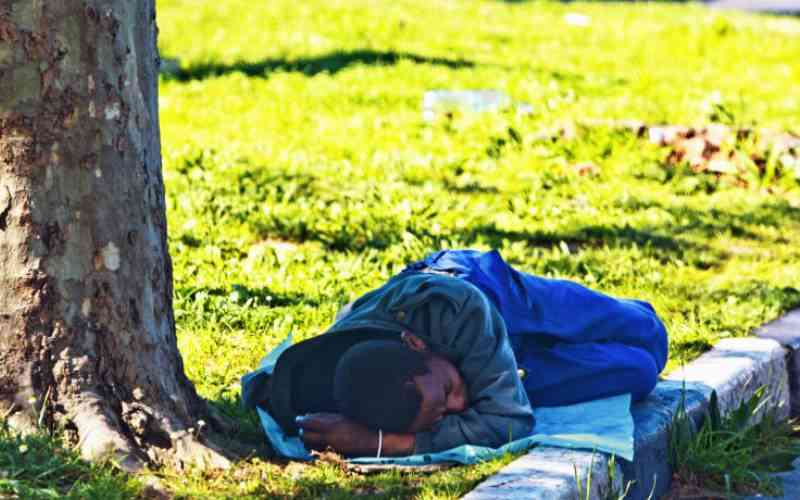Maryanne Njuguna was in high school when she began nodding off at the drop of a hat.
“At first I thought it was because of change in sleep patterns. I would wake up every morning feeling exhausted. And in class, I would fall asleep while taking notes. Out of class I would fall asleep playing or exercising or even standing up. I know it sounds odd. It felt odd too. And some teachers would make me stand during lessons so as to stop me from falling asleep, but I would sleep while standing. It was unstoppable,” she explains.
This new normal affected Maryanne’s classwork as, as she would be sleeping through most lessons. Seemingly, picking up a book induced sleep and the assumption that she was being a truant was solidified by a doctor who said that she was faking the sleep anomaly and being a typical rebel teen.
It was only five years ago when she was diagnosed at the Kenyatta National Hospital with a condition known as Narcolepsy.
Narcolepsy is a rare condition that causes uncontrollable sleep episodes. It is characterised by an irresistible desire to fall asleep at inappropriate times and places. It could be while talking, driving, eating, walking or even running, “says Dr Silvanus Wabwire, a consultant neurologist.
There are two types of Narcolepsy. One category with Cataplexy (N+C) and Narcolepsy without Cataplexy (N-C). In the former, an autoimmune reaction destroys the brain’s hypocretin-producing cells. These cells are essential for properly regulating sleep and wakefulness as well as other bodily functions such as blood pressure and metabolism. This is what MaryAnn suffers from. The other type, the N-C is not very well understood as far as its causes go.
The onset of narcolepsy can occur anytime between early childhood and 50 years of age. Two peak periods have been identified; one around 15 years of age and another around age 36.
Treating narcolepsy
For Maryanne, it was five years of living with the condition before she could get the correct diagnosis and start treatment.
“However a few months into the treatment, the medication went out of stock in the Kenyan market for more than six months. But at least then, I knew why I was always sleepy. And I had a doctor’s note to prove it, even though no one really understood what narcolepsy was,” she says.
Dr Wabwire says that treatment needs to be individualised depending on the pattern of narcolepsy and the patient’s work and social demands for full wakefulness. And it is usually a combination of interventions such as:
1) Strategically placed 15-20-minute naps during lunch hour, before or after dinner
2) Use of stimulant drugs such as Ritalin to heighten alertness
3) A group of antidepressants; especially for patients who sleep and fall in what is called narcolepsy with cataplexy (N+C)
Narcolepsy being a chronic condition and an invisible disability, there is a lot of stigma and embarrassment suffered by the affected people. Some of the most common assumptions are that one is drunk or on drugs.
Stay informed. Subscribe to our newsletter
“I have struggled with failed relationships and have had unsupportive people around me. It isn’t easy always explaining why I’m always sleepy or looking tired. It is doubly exhausting explaining to people I meet what Narcolepsy is. So it is easy to withdraw from the society. This can predispose one to depression,” she says, adding that so far no other member of her family has had to battle this condition.
The sleepy childbirth
The intensity of sleep and fatigue becomes overwhelming during her monthly menstrual flow, while experiencing a common cold or taking other medication for general illnesses. And when having her first baby, she had to battle through attacks to deliver safely.
“I experienced full-blown cataplexy attacks during my daughter’s birth. Every contraction seemed to paralyse my body. I couldn’t move. And contrary to recommendations, I lay down as the contractions got closer and more intense. I slept between contractions and would push then sleep. I don’t think the doctors understood what was happening, and I needed a lot of help through it.”
Causes of narcolepsy
Dr Wabwire says that there is no local data on the prevalence of narcolepsy but most of the neurologists have a number of patients under their care with many remaining undiagnosed.
“Data from the West puts the prevalence at 1 in 2,000 (US), 1 in 600 (Japan), and 1 in 500,000 (Israel).”
While there is a hereditary component of the disease, it can also be sporadic with no obvious explanation on the possible cause.
It is advised to rule out secondary narcolepsy that could be related to drugs, medical, neurological, and psychiatric disorders.
“The diagnosis of narcolepsy is relatively straightforward in experienced hands. Apart from history and details of the presentation, not much more is required for diagnosis,” he says.
A few cases however might not be so straightforward. “They might require sleep studies and a lumbar puncture to measure levels of a chemical called hypocretin around the brain.”
 The Standard Group Plc is a
multi-media organization with investments in media platforms spanning newspaper
print operations, television, radio broadcasting, digital and online services. The
Standard Group is recognized as a leading multi-media house in Kenya with a key
influence in matters of national and international interest.
The Standard Group Plc is a
multi-media organization with investments in media platforms spanning newspaper
print operations, television, radio broadcasting, digital and online services. The
Standard Group is recognized as a leading multi-media house in Kenya with a key
influence in matters of national and international interest.
 The Standard Group Plc is a
multi-media organization with investments in media platforms spanning newspaper
print operations, television, radio broadcasting, digital and online services. The
Standard Group is recognized as a leading multi-media house in Kenya with a key
influence in matters of national and international interest.
The Standard Group Plc is a
multi-media organization with investments in media platforms spanning newspaper
print operations, television, radio broadcasting, digital and online services. The
Standard Group is recognized as a leading multi-media house in Kenya with a key
influence in matters of national and international interest.





